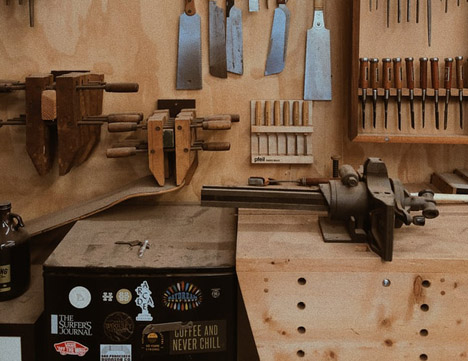Home improvement projects often end up in you having leftover building materials such as wood, paint, and bricks. This is particularly common if you are less experienced with DIY and are estimating how much material you need for the project at hand.
While these leftover items often get stored in your attic or shed, these places do not offer the most ideal environment for the long-term storage of these materials. Therefore, stored building items often deteriorate to the point where they cannot be used again once they come out of storage.
As these materials are often expensive, it pays to know exactly how to best store these items to maximize their longevity. This week, we’re teaming up with Volodymyr Barabakh from Fortress Home to run through how to best store materials commonly used in home improvement projects.
Lumber needs a dry environment and to be laid down with even pressure
Excess wood is one of the most difficult building materials to store properly due to its tendency to absorb moisture. This is particularly problematic for wooden slats that are designed to slot together. These slats absorb moisture unevenly, meaning that when they do, parts of the slats expand, making them lose their uniform shape. This is a process known as warping. Once a wooden slat is warped it cannot fit flush with other slats, making them essentially no more useful than scrap wood. Since warping is caused by wood absorbing moisture unevenly, there are two ways to prevent it from happening. These are
- Keep lumber in as dry an environment as possible: Ideally, you want to keep excess lumber in a space where humidity is regulated. Failing that you want to wrap stacks of wood tightly with a tarpaulin to keep out as much moisture as possible.
- Put even pressure on stored lumber: You should put weights evenly across piles of wood to ensure that any moisture that gets absorbed by them is spread evenly. Putting weights of around two pounds, spaced six inches apart from each other should stop lumber from warping even if it is kept in humid conditions.
Paint and primer needs to be sealed properly and kept in a cool environment
The main way that paint and primer deteriorate is that it dries out. This drying process is sped up if they are kept in an environment that is too hot. You should try to avoid keeping paint or primer in environments over 70 degrees Fahrenheit. This makes attics a very poor place to keep paints and primers as they can get very hot in summer or when the heating is on (as hot air rises). Climate controlled storage units tend to be cooler and drier than attics, and therefore would make a good alternative space to store leftover paint.
The main way that paint and primer deteriorate is that it dries out. This drying process is sped up if they are kept in an environment that is too hot. You should try to avoid keeping paint or primer in environments over 70 degrees Fahrenheit. This makes attics a very poor place to keep paints and primers as they can get very hot in summer or when the heating is on (as hot air rises). Storage units tend to be cooler and drier than attics, and therefore would make a good alternative space to store leftover paint.
Glue needs to be kept at between 50-70 degrees
If glue gun glue is kept at too high a temperature it can misshapen and not fit in the gun properly when it comes to being reused. Keep the glue at too low a temperature and it can partially freeze, making it hard to be squeezed out of the glue gun even when unfrozen.
Glue gun glue should therefore be kept between temperatures of 40 and 70 degrees Fahrenheit, ideally closer to the 50 degree mark. A fridge is one of the best places to keep glue gun glue.
Pots of liquid glue should be treated similar to pots of paint and primer, sealed properly and stored in a cool dry environment. Temperature-controlled storage units are a good option for this. Bear in mind that glue will never last as long as paint, primer or other liquid building materials, so try not to overbuy when you are planning out your home improvement project.
Bricks need to be kept away from water
Although bricks are sturdy enough to be kept in humid environments, you do not want them to be sitting in puddles of water for a long period of time. This will slowly erode away the brick’s surface.
If you plan on keeping spare bricks outside, try to keep them elevated at least a couple of inches off the ground so they do not sit in rainwater. Failing this, try to create some sort of physical barrier around your pile of bricks so that rainwater cannot build up around them.
Tiles need to be kept away from intense heat
Long-term exposure to intense heat (anything over 120 degrees Fahrenheit) can make tiles fragile and more susceptible to cracking. Although it is not necessary to keep them in a climate-controlled environment, it’s not a good idea to keep them in your attic if you live in a hot environment as attics can get well above this temperature if it is very hot outside.
Final thoughts on storing building materials
The main causes of deterioration to building materials are being kept in conditions that are too hot or too humid. If you are able to keep your materials sealed or covered properly, and in locations where the temperature is stable and uniform, then it’s likely that you can reuse old materials for your next DIY project.

This article was written by Volodymyr Barabakh. Volodymyr is the Owner and Project Director of design and build company Fortress Home.


